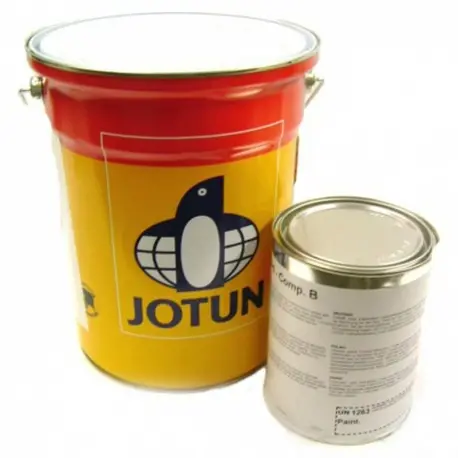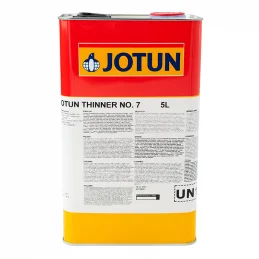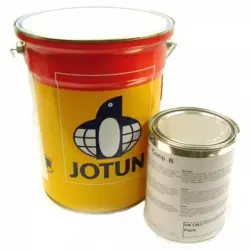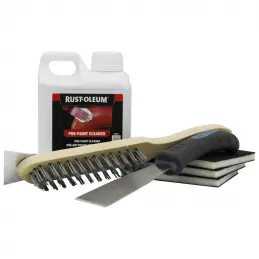Jotatemp 1000, formerly known as Jotatemp 1000 Ceramic, is resistant to low temperatures down to -196 °C and high temperatures up to 1000 °C continuously, where substrates allow. Can be used as primer or finish coat in atmospheric environments. Suitable for properly prepared carbon steel, stainless steel and ceramic substrates. It can be applied on hot substrates up to 250 °C.
Specially designed for preventing corrosion under insulation (CUI). Can be used in combination with Jotatemp 540 Zinc as primer, providing heat resistance up to 540 °C and lasting corrosion protection. For shorter periods, such a combined system can handle peak temperatures up to 600 °C. Suitable for insulated and non insulated surfaces.
This is a three component titanium catalyzed inorganic ceramic copolymer. It complies to the generic type Multi Polymeric Matrix Coating.
The product passes the standard tests used for qualifying coatings preventing corrosion under insulation (CUI). It will offer proper corrosion protection at ambient conditions during construction and shut-down periods.
Quick Links - Click To Jump To Section:
Features & Benefits
- Resistant to low temperatures down to -196 °C and high temperatures up to 1000 °C continuously
- Can be used as primer or finish coat in atmospheric environments
- Suitable for properly prepared carbon steel, stainless steel and ceramic
- Can be applied on hot substrates up to 250 °C
- Specially designed for preventing corrosion under insulation (CUI)
- Can be used in combination with Jotatemp 540 Zinc as primer
- Providing heat resistance up to 540 °C and lasting corrosion protection
- For shorter periods, such a combined system can handle peak temperatures up to 600 °C
- Suitable for insulated and non insulated surfaces
- Three component
- Titanium catalyzed inorganic ceramic copolymer
- Complies to the generic type Multi Polymeric Matrix Coating
- Offers proper corrosion protection at ambient conditions during construction and shut-down periods
Approvals and certificates
Tested in accordance with ISO 12944-6, high expected durability in corrosivity category C5 For certificates and approvals for high temperature and cryogenic service please contact our technical support team on 0113 2455450 (option 2) or send a message to [email protected]
Additional certificates and approvals may be available on request.
Product Data
| Property | Test/Standard | Description |
|---|
| Solids by volume | ISO 3233 | 75 ± 2 % |
| Gloss level (GU 60 °) | ISO 2813 | matt (0-35) |
| Flash point | ISO 3679 | Method 1 26 °C |
| Density | calculated | 1.8 kg/l |
| VOC-US/Hong Kong | US EPA method 24 (tested) (CARB(SCM)2007, SCAQMD rule 1113, Hong Kong) | 362 g/l |
| VOC-EU | IED (2010/75/EU) (theoretical) | 329 g/l |
| VOC-China | GB/T 23985-2009 (tested) | 330 g/l |
| VOC-Korea | Korea Clean Air Conservation Act (tested) (Max. thinning ratio included) | 401 g/l |
The provided data is typical for factory produced products, subject to slight variation depending on colour.
All data is valid for mixed paint.
Gloss description: According to Jotun Performance Coatings' definition.
Film Thickness per Coat
Typical recommended specification range
| Typical recommended specification range |
|---|
| Dry film thickness | 100 | - | 150 | μm |
| Wet film thickness | 130 | - | 200 | μm |
| Theoretical spreading rate | 7.5 | - | 5 | m²/l |
In one-coat systems, dry film thickness up to 200 µm can be applied.
Surface Preparation
To secure lasting adhesion to the subsequent product all surfaces shall be clean, dry and free from any contamination.
Surface Preparation Summary Table
| Surface preparation |
|---|
| Substrate | Minimum | Recommended |
| Carbon steel | St 2 (ISO 8501-1) | Sa 2½ (ISO 8501-1) |
| Stainless steel | The substrate shall be mechanically prepared to impart a scratch pattern, and to remove all polish from the surface. | Abrasive blast cleaning to achieve a surface profile using non-metallic abrasive media which is suitable to achieve a sharp and angular surface profile. |
| Ceramic substrates | The surface shall be clean and dry | The surface shall be clean and dry |
| Coated surfaces | Clean, dry and undamaged compatible coating | Clean, dry and undamaged compatible coating |
Application
For in-depth application procedures, please refer to the Application Guide.
Application methods
The product can be applied by
- Spray: Use airless spray
- Brush: Recommended for stripe coating and small areas. Care must be taken to achieve the specified dry film thickness
Product mixing ratio (by volume)
- Jotatemp 1000 Comp A: 110 part(s)
- Jotatemp 1000 Comp B: 1 part(s)
- Jotatemp 1000 Comp C: 2.5 part(s)
Mix component A and component C (zinc powder) thoroughly before adding component B.
Thinner/Cleaning solvent
To achieve the best spraying properties the product must be thinned 3-5 % by volume before application. Since this is a heavy bodied material it is important that thinning level is kept below 7 % to avoid sagging and settling.
Note: Korean VOC regulation "Korea Clean Air Conservation Act" and its corresponding thinning limit will prevail over recommended thinning volumes.
Guiding data for airless spray
- Nozzle tip (inch/1000): 17-23
- Pressure at nozzle (minimum): 150 bar/2100 psi
Drying and Curing Time
| Substrate temperature | 10 °C | 15 °C | 23 °C | 40 °C |
|---|
| Surface (touch) dry | 5.5 h | 3 h | 2.5 h | 1.5 h |
| Walk-on-dry | 24 h | 18 h | 6 h | 3.5 h |
| Dry to over coat, minimum | 24 h | 18 h | 6 h | 3.5 h |
| Dried/cured for service | 4 d | 3 d | 24 h | 18 h |
For maximum overcoating intervals, refer to the Application Guide (AG) for this product.
Drying and curing times are determined under controlled temperatures and relative humidity below 85 %, and at average of the DFT range for the product.
Surface (touch) dry: The state of drying when slight pressure with a finger does not leave an imprint or reveal tackiness.
Walk-on-dry: Minimum time before the coating can tolerate normal foot traffic without permanent marks, imprints or other physical damage.
Dry to over coat, minimum: The recommended shortest time before the next coat can be applied.
Dried/cured for service: Minimum time before the coating can be permanently exposed to the intended environment/medium.
Induction Time and Pot Life
| Paint temperature | 23 °C | 40 °C |
|---|
| Pot life | 6 h | 4 h |
Heat Resistance
Ceramic substrates:
Carbon steel* / Stainless steel*:
- Continuous: 650 °C
- Peak: 750 °C
* Operating temperatures above 540 °C (1004 °F) will require special attention to the substrate's ability to maintain integrity. Contact Technical Sales Support (TSS) for details.
Product Compatibility
Depending on the actual exposure of the coating system, various primers and topcoats can be used in combination with this product. Some examples are shown below. Contact Jotun for specific system recommendation.
- Previous coat: zinc silicate, inert multipolymeric matrix, itself
- Subsequent coat: silicone, itself
Packaging (typical)
| Volume (litres) | Size of containers (litres) |
|---|
| Jotatemp 1000 Comp A | 4.4 | 5 |
| Jotatemp 1000 Comp B | 0.04 | 0.25 |
| Jotatemp 1000 Comp C | 0.1 | 1 |
The volume stated is for factory made colours. Note that local variants in pack size and filled volumes can vary due to local regulations.
Storage
The product must be stored in accordance with national regulations. Keep the containers in a dry, cool, well ventilated space and away from sources of heat and ignition. Containers must be kept tightly closed. Handle with care.
Storage temperature not to exceed 40 °C.
Shelf life at 23 °C
- Jotatemp 1000 Comp A: 12 month(s)
- Jotatemp 1000 Comp B: 12 month(s)
- Jotatemp 1000 Comp C: 12 month(s)
In some markets commercial shelf life can be dictated shorter by local legislation. The above is minimum shelf life, thereafter the paint quality is subject to re-inspection.
Caution
This product is for professional use only. The applicators and operators shall be trained, experienced and have the capability and equipment to mix/stir and apply the coatings correctly and according to Jotun's technical documentation. Applicators and operators shall use appropriate personal protection equipment when using this product. This guideline is given based on the current knowledge of the product. Any suggested deviation to suit the site conditions shall be forwarded to the responsible Jotun representative for approval before commencing the work.
Colour Variation
When applicable, products primarily meant for use as primers or antifoulings may have slight colour variations from batch to batch. Such products may fade and chalk when exposed to sunlight and weathering.
Colour and gloss retention on topcoats/finish coats may vary depending on type of colour, exposure environment such as temperature, UV intensity etc., and application quality. Contact your local Jotun office for further information.






